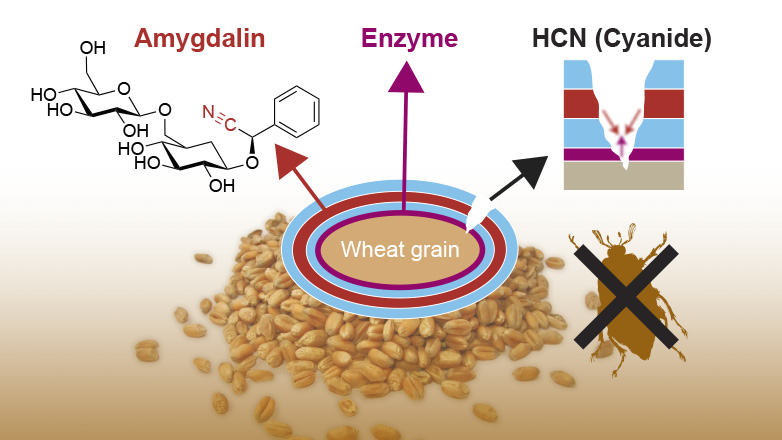Cyanogenic seed defense featured in the News
The research of Carlos Mora and Jonas Halter about cyanogenic seed defence has been featured on several news platforms including ETH News.

Several layers of polylactic acid surround a wheat grain. An enzyme is embedded in the innermost layer, while the middle layers contain amygdalin. Insects can release these two substances as they feed, leading the enzyme to convert the amygdalin into hydrogen cyanide. This can weaken or kill the insect larvae. (Graphics: ETH Zurich)
References
Mora CA, Halter JG, Adler C, Hund A, Anders H, Yu K, Stark WJ. Application of the Prunus spp. Cyanide Seed Defense System onto Wheat: Reduced Insect Feeding and Field Growth Tests. Journal of Agricultural and Food Chemistry 2016. DOI: external page 10.1021/acs.jafc.6b00438
Halter JG, Chen WD, Hild N, Mora CA, Stoessel PR, Koehler FM, Grass RN, Stark WJ. Induced cyanogenesis from hydroxynitrile lyase and mandelonitrile on wheat with polylactic acid multilayer-coating produces self-defending seeds. Journal of Materials Chemistry A 2014, 2, 853-858. DOI: external page 10.1039/C3TA14249Cexternal page